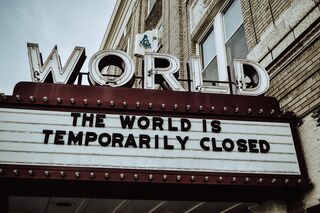Psychology
Why Higher Consumer Demand Doesn’t Lead to a Price Increase
High willingness-to-pay comes with expectations of fairness and trustworthiness.
Posted December 28, 2020
“We’re making 20 times the amount of sanitizer in July as we did last year. It just gives you the sense of the demand that there is.” - Laxman Narasimhan, CEO of Reckitt Benckiser, Maker of Lysol.
When a business sets the prices of its products and services, customer value, or how much customers are willing to pay, is a crucial driver of the decision. The customer's willingness to pay, in turn, is a function of the benefits – functional and emotional – derived from the purchase. In theory, the greater the customer value, the higher the price that the seller can charge.
The pandemic has increased demand for many consumer products
The COVID-19 pandemic has upended customer value by dramatically changing the nature of benefits that consumers derive from many products and services. After people started quarantining and working from home in March, for example, they derived far more value from cleaning and disinfecting products, exercise equipment, and indoor plants. The willingness to pay for these things shot up. Concurrently, the adoption of safety-first, socially distant lifestyles by tens of millions meant that they devalued close-contact experiential services. Gym memberships, fine dining restaurant meals, movie tickets, and vacation packages all plummeted in value and willingness-to-pay.

A basic economic principle is that a change in consumer demand corresponds to a change in price. When demand increases, the price should go up, and vice versa. Once consumer psychology is factored in, however, the relation between demand and price is more complicated. Most sellers do not raise prices directly when demand goes up, nor do they cut prices immediately when demand goes down. This is known as price rigidity.
In this post, I want to explore the consumer psychology behind the price rigidity of popular pandemic products. In a companion post, I will consider how sellers circumvent rigid asking prices and use creative pricing strategies to benefit from the increased demand and higher willingness-to-pay during the pandemic.
In theory, greater demand means higher pricing power
During the pandemic, demand (and willingness-to-pay) shot up for cleaning and disinfecting products virtually overnight. Even nine months into the pandemic, it is difficult to find items like disinfectant wipes and bleach on grocery store shelves. Exercise equipment and indoor plants were two other categories that suddenly grew in popularity.
Sellers of these products, particularly well-known, established brands, had the opportunity to raise prices. They could have increased prices by 10 percent, 20 percent, or more, and still sold everything they produced. If you want evidence of pricing power, consider the average prices asked by third-party resellers on platforms like eBay and Amazon for these products.
In practice, well-known brands rarely increase prices directly
While third-party resellers tried to take advantage by hoarding and selling branded cleaning products at inflated prices, these products’ manufacturers took a different approach. Well-known national brands like Clorox, Lysol, Peloton, and American Barbell, by and large, maintained or even lowered prices of their popular products. There are two significant reasons for the reluctance to raise prices. Both have to do with consumer psychology.
First, even though consumers may be willing to pay more for bleach, disinfectant wipes, and exercise equipment, their willingness is induced by the pandemic’s unique circumstances. It arises from a position of weakness and accompanies a sense of resignation and fear. They justify this by saying, “I need this. I have no choice. I will spend whatever I have to.”.
Despite their temporary higher willingness to pay, consumers maintain price anchors about what these products should reasonably cost. These anchors reflect consumer price knowledge accumulated over a longer time span, based on buying history, recent online and in-store prices, or even from conversations in social media. If these products’ makers were to increase prices suddenly and steeply, consumers would register the price increases, remember them, and use the information in future buying decisions.

The second reason concerns the perceptions of fairness and trust, which are especially meaningful in times of turmoil. Consumers expect the brands they’ve been buying and the stores they have been patronizing for years or even decades to behave honorably and refrain from taking advantage.
In this sense, they may be more tolerant of paying an inflated price to some unknown opportunistic seller on eBay or Craigslist than paying these same prices at Kroger or Walmart. If a familiar brand raises prices, consumers' outrage will stem not from having to shell out a few extra dollars but more from a sense of betrayal and disappointment because the seller violated the fundamental relational norms of fairness and reciprocity.
In the United States, manufacturer brands like Clorox and Lysol don’t control the final prices that consumers pay for their products. Their products pass through complex distribution channels (from the factory to distributors to wholesalers, then to retailers) to get into consumers’ hands. During the process, there is ample opportunity for enterprising (and unethical) individuals to purchase these items in bulk and resell them at whatever price they choose through platforms like eBay, Facebook Marketplace, and Craigslist.
For example, suppose someone lists three cans of Lysol disinfectant spray on eBay for $1,358 (plus $13 shipping) as actually happened in early April. Lysol can’t do anything directly about it beyond condemning this behavior. If consumers don’t understand who determines the final price, they may see the high prices of Lysol as a sign that the company is exploiting them. This would harm the brand’s reputation and future value significantly.
So, it is crucial for manufacturer brands to maintain pre-pandemic prices and actively and vocally denounce indiscriminate price increases and price gouging by resellers. For instance, Clorox has articulated its position as follows:
“As a company, we are focused on doing everything feasible to maximize the supply of disinfecting products to serve consumers, healthcare workers and our communities in the face of demand like we have never seen. And we also want to ensure that everyone has access to our disinfecting products at standard prices. We are taking aggressive action to combat third-party price gouging.”
Conclusion
When the demand for their products and services went up dramatically during the pandemic, few reputed brands increased their prices directly. Channel members, resellers, and opportunistic sellers were far more likely to raise prices indiscriminately and attempt to earn a quick profit. Smart brands employed nuanced and creative pricing strategies that allowed them to gain some economic benefit but forgo a significant portion of the additional profit they could have pocketed because consumers suddenly placed a higher value on their offerings. Their primary interests lay in maintaining their reputations and relationships with their customers.




